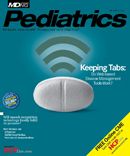Publication
Article
MDNG Pediatrics
Influenza
//The Educated Patient
Children, the Flu, and the Flu Vaccine
Refer patients to this site so they can learn why the flu is more dangerous than the common cold, and better understand the burden that flu can place on families. Featured on this CDC site are seasonal influenza vaccination recommendations for different age groups, an explanation of who needs to get vaccinated—including nannies and daycare providers of children under age 5, and a listing of which children are at a greatest risk for developing seasonal flu complications. Parents can also find out when children should get vaccinated, and what the special instructions are for children being vaccinated against seasonal flu for the first time.
Pregnant Women and the Flu: Five Things You Need to Know
Pretty much every major health and government organization—including the Department of Health & Human Services, FDA, and National Institutes of Health—provides content for Flu.gov, making it one of the most reliable sites available. The second of the site dedicated solely to pregnant women covers five topics that are of heightened importance to this patient group: getting vaccinated, what to do if you experience flu-like symptoms, how the flu is treated in pregnant women, when to seek emergency care, and the importance of breastfeeding. Also included is a PDF that on “flu essentials” for pregnant women that physicians can print out to hang up in their office or distribute to patients.
//Medical Websites
Published in the Journal of Allergy and Immunology in September of 2009, the goal of this article is to “assist clinicians in preventing, diagnosing, and managing influenza infections. Here, pediatricians and other health care providers can find out whether patients with asthma should be vaccinated for seasonal influenza, what the side effects of the vaccine are and how they compare in patients with and without asthma, the symptoms that suggest influenza infection in patients with asthma, which patients with asthma should be tested for seasonal and H1N1 influenza, how influenza should be treated with patients with asthma, and what to do if a patient has a history of an allergic reaction to influenza vaccination.
Seasonal Influenza in Adults and Children
In April 2009, Clinical Infectious Diseases published guidelines from the Infectious Diseases Society of America for the diagnosis, evaluation, and management of patients who might have influenza. Featured here are recommendations from IDSA on diagnostic issues, and information on antivirals for treatment, antivirals for chemoprophylaxis, and outbreak management in institutional settings. The article also provides answers to several key questions, such as what specimens should be collected for influenza testing from patients with suspected influenza, which antiviral drugs should be used for treatment, when influenza outbreaks should be suspected in an institution, and the role for testing institutional residents with influenza-like illness after one or more residents have been diagnosed with influenza.
//Online CME
A 2010 Clinician’s Guide to Influenza & Vaccination Protocols
Credits: 1.00
Fee: None
Expires: March 31, 2013
Multimedia: Audio/Slides
In this activity, Lorry Glen Rubin, MD, chief of pediatric infectious diseases at Schneider Children’s Hospital of the North Shore-Long Island Jewish Health System, will provide answers to fundamental questions about novel H1N1, information regarding the importance of both seasonal and novel influenza vaccination, vaccine recommendations for healthcare workers beyond influenza, and a brief overview of the Statewide Immunization Registry.
Credits: 1.50
Fee: None
Expires: March 31, 2012
Multimedia: Audio/Video
In this archived webcast of a symposium held during the World Society for Pediatric Infectious Diseases’ 6th World Congress, Edwin J. Asturias, MD, of Johns Hopkins University and colleagues discuss the burden of influenza on individuals. Listen as the presenters identify goals and strategies for vaccination policies in response to anticipated influenza outbreaks, and discuss the importance of vaccinating school aged children to minimize the impact of influenza and decrease the risk for potential epidemics.
//Clinical Trials
Study to Evaluate Impact of School-based Influenza Vaccination on School Populations
Study Type: Interventional
Age/Gender Requirements: 4-18 years (male/female)
Sponsor: Children’s Hospital Los Angeles
Purpose: In this prospective cohort study, which will compare rates of confirmed influenza illness in vaccinated and non-vaccinated children between schools with and without vaccination programs, “the investigators hypothesize that in addition to lowering rates of influenza in vaccinated children, raising vaccination rates by 30-40% through school-based vaccination programs will decrease incidence of influenza in non-vaccinated children attending those schools compared to non-vaccinated children in schools with low vaccination rates.”
Study Type: Interventional
Age/Gender Requirements: 18-49 years (female)
Sponsor: National Institute of Allergy and Infectious Diseases
Purpose: This multi-center study seeks to determine the safety of twolicensed flu vaccines—nasal spray and flu vaccine shot—when administered to women who are breastfeeding, and to compare the immune response of the two vaccines in breastfeeding mothers. Healthy postpartum women who plan to breastfeed through 28 days post vaccination and who have not received 2010-2011 influenza vaccine will be assigned to one of the two vaccines.
//eAbstracts
Clinical Characteristics of Children with 2009 Pandemic H1N1 Influenza Virus Infections
Journal: Pediatrics International(October 12, 2010)
Authors: Dubnov-Raz G, Somech R, Warschawski Y, et al.
Purpose: Using clinical data of children with H1N1 infections, researchers sought to develop a better understanding of the clinical manifestations, hospital course, and treatment options of the 2009 pandemic H1N1 influenza virus in preparation for future outbreaks.
Results: Analyses showed that fever, cough and shortness of breath were prevalent symptoms; hospitalized patients were more likely to have shortness of breath, abnormal lung auscultation, abnormal X-ray, and a chronic illness compared with non-hospitalized ones, while disease manifestations were similar between children with or without chronic diseases. Researchers concluded that “H1N1 infection follows a mild course, even in the presence of severe underlying diseases,” and that “a rapid resolution of H1N1 symptoms after intravenous immunoglobulin treatment warrants further study, and could be a possible therapeutic option for severe cases.”
Journal: Pediatric Critical Care Medicine (October 28, 2010)
Authors: Spaeder M, Milstone A, Fackler J
Purpose: To evaluate the association of bacterial pneumonia and respiratory failure in children with community-acquired influenza infection presenting to a pediatric intensive care unit between October 2002 and September 2008.
Results: Of the 59 patients admitted to the PICU unit with laboratory-confirmed community-acquired influenza during the study period, 24 patients (41%) had respiratory failure and 14 patients (24%) met the definition of bacterial pneumonia. The risk of respiratory failure was increased in the presence of bacterial pneumonia, and after adjusting for age and chronic medical conditions, researchers concluded that patients with bacterial pneumonia had a 3.7 times greater odds of respiratory failure. “Early aggressive therapy should be considered for patients with severe influenza,” they noted.
//Podcasts
Improving Your Influenza Vaccination Program
This podcast from the Joint Commission and the CDC provides information on how health care workers can keep their patients safe during flu season, an H1N1 update from the CDC, H1N1 vaccine recommendations and availability, common reasons why health care workers don’t get vaccinated, and tips to overcoming barriers to increasing vaccinations of health care workers.
Influenza 2010-2011: ACIP Vaccination Recommendations
In this podcast, Joseph Bresee, MD, chief of epidemiology and prevention at the CDC Influenza Division, discusses which patients should be vaccinated against seasonal flu during the 2010-2011 season, which patients are at risk for severe illness from the flu, and the benefits of vaccination.
PHARMA FOCUS
Fluzone (Influenza virus vaccine)
//Medical Websites
This section of Fluzone.com provides information for health care professionals about Fluzone, which is indicated for active immunization in patients six months of age and older against influenza disease caused by influenza virus subtypes A and type B. Here, providers can download educational materials, including “A Parent’s Guide to Vaccine-preventable Diseases for Children”; obtain coding and reimbursement support; access dosing guidelines for Fluzone for patients six months through nine years of age; and order the vaccine. Also included is a tool that lets providers calculate how many doses of Fluzone their practice will need.
//Clinical Trials
Study of Quadrivalent Influenza Vaccine among Children
Study Type: Interventional
Age/Gender Requirements: 6 months to 8 years (male/female)
Sponsor: Sanofi-Aventis
Purpose: This study is being conducted to evaluate a prototype quadrivalent influenza vaccine, the licensed 2010-2011 trivalent influenza vaccine (TIV) containing the primary B strain, and the investigational TIV containing the alternate B strain in children aged six months to less than nine years of age.






